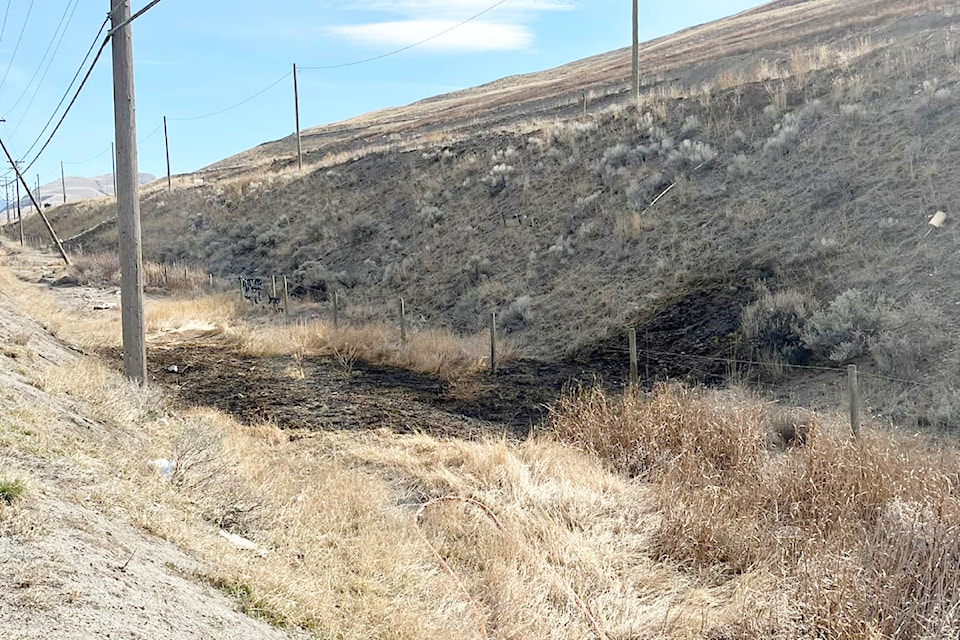As of Aug. 18, the BC Wildfire Service (BCWS) had recorded 1,488 wildfires in B.C. so far this season, with 347 of those fires (23 per cent) described as “human-caused”. But what, exactly, is meant by “human-caused”?
What immediately comes to mind for most people, when they see that a wildfire is described as human-caused, is probably that it was started by a campfire that got out of hand, or a cigarette butt tossed out of a car window. However, the BCWS classifies any wildfire that is not caused by lightning (or in rare instances, spontaneous combustion) as human-caused.
There are many different situations, actions, or activities that can lead to a wildfire being deemed human-caused. The BCWS lists several general causes for human wildfire starts: category 1 campfires; category 2,3 or resource management open fires; equipment use (e.g mechanical equipment); railway operations; utility transmission operations; discarded smoking material; incendiary (e.g. intentionally set); vehicle; and miscellaneous (e.g. blasting, firearms, etc.).
Category 1 campfires are open fires that meet two requirements: they burn in one pile that is no larger than 0.5 metres in height and 0.5 metres in width, and are lit, fuelled, or used by any person for a recreational purpose (or by a First Nation for a ceremonial purpose).
The only region where unrestricted campfires are currently allowed is the Prince George Fire Centre. They are completely banned in the Kamloops, Cariboo, and Southeast Fire Centres, and bans and restrictions apply in the Coastal and Northwest Fire Centres. Many municipalities which allow campfires — including Ashcroft and Cache Creek — have also banned campfires.
A Category 2 open fire is an open fire (other than a campfire) that burns material in one pile not exceeding two metres in height and three metres in width; burns material concurrently in two piles each not exceeding two metres in height and three metres in width; or burns stubble or grass over an area that does not exceed 0.2 hectares.
A Category 3 open fire means an open fire that burns material concurrently in three or more piles each not exceeding two metres in height and three metres in width; burns material in one or more piles each exceeding two metres in height or three metres in width; burns one or more windrows; or burns stubble or grass over an area exceeding 0.2 hectares.
A Resource Management Open Fire is an open fire that burns un-piled slash over an area of any size. It can also mean a fire that is not a campfire or a category 2 or 3 open fire and is lit, fuelled, or used for silviculture treatment, forest health management, wildlife habitat enhancement, fire hazard abatement, ecological restoration, or range improvement.
Equipment Use fires are wildland fires that result from the operation of mechanical equipment (excluding railroads) ranging from heavy construction to small portable engines. For example, a blade on a piece of equipment can hit a rock, which causes a spark that ignites wildland fuels and results in a wildfire.
A Railway Operations fire is one that results from the operation and maintenance of engines, locomotives, or rolling stock, or from the repair, construction, reconstruction, or maintenance of the railway track or right of way.
A Utility Transmission Operations fire is one caused by the operation, transmission, construction, establishment, maintenance, or repair of electrical, oil, gas, radio, and telephone service. An example would be a tree falling onto power lines and igniting wildland fuels.
A Discarded Smoking Materials fire is one caused by smoking activities or accessories, including matches, cigarettes, cigars, pipes, illegal substances, etc., while a Vehicle Fire is any wildland fire that started as a result of a vehicle. An Incendiary Fire is any fire that is intentionally ignited in an area, or under circumstances, where and when there should not be a fire.
Finally, there are a number of wildfires that cannot be properly classified under other standard causes. Some of these include firearms use/ammunition/binary exploding targets; fireworks; signal or roadside flares; blasting operations; outdoor stoves or furnaces; grinding/cutting/welding; tiki or similar torches; reflective or magnifying glass; electric fences; flying lanterns (sky lanterns); and spontaneous combustion of manmade materials.
Anyone who is taking part in an activity that could cause a wildfire should remain diligent, whether they are out in the backcountry or staying close to home. Report all wildfires, either by calling 1-800-663-5555 (toll-free) or *5555 on a cellphone or through the BC Wildfire Service Mobile App.
If you use the Mobile App for your report, you should include a photo of the fire if possible. These photos help operational staff by providing valuable information that helps with response decisions and resource allocation.



